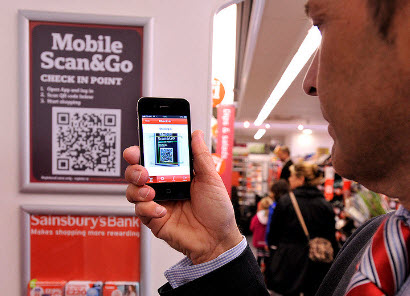Scan and Go to be tested in Sainsbury’s stores in UK
Many consumers have become familiar with QR codes because of how often they are used in marketing. Indeed, QR codes have become one of the favored tools for advertisers looking to engage mobile consumers. The codes can do much more than provide consumers with information on products and services, however, as the UK’s Sainsbury supermarkets are preparing to show. Sainsbury has become the next location for a pilot project for the Scan and Go program, which turns QR codes into virtual checkout stands.
System already quite famous in the US
Scan and Go was tested in the U.S. some time ago at some Walmart retail stores. The program managed to garner a fair deal of acclaim because of its ability to provide a convenient service to shoppers. Now, Sainsbury’s will be testing the program to see if similar results can be produced amongst tech-savvy consumers in the United Kingdom. Those that will be participating in the testing of the program will need the Scan and Go application, which allows them to scan the QR codes that will be riddled throughout local stores.
Consumers will be able to use QR codes to purchase items
When a customer arrives at a participating Sainsbury’s supermarket, they scan a QR code located near one of the store’s entrances. After “logging in,” shoppers can then scan the QR codes that are affixed to the products they are looking to buy. Even loose items, such as fruit, can have a QR code printed for them through an automated service. These codes provide information on the products and gives shoppers and opportunity to make a purchase from their smart phone when they are finished shopped.
Program will provide special deals for frequent users
Scan and Go is equipped with a tracking function that monitors the spending habits of shoppers. This information is used to provide these consumers with special discounts concerning the products that they purchase often. Sainsbury’s believes that the Scan and Go system could valuable to consumers that are short on time but must get their shopping done quickly. The company does not currently have plans to replace manned and self-service checkout stands with this system.

 onsumers. Through this campaign, consumers will be able to access digital content provided by the non-profit group and be able to make donations to the organization online through their smart phones or similar mobile devices.
onsumers. Through this campaign, consumers will be able to access digital content provided by the non-profit group and be able to make donations to the organization online through their smart phones or similar mobile devices.